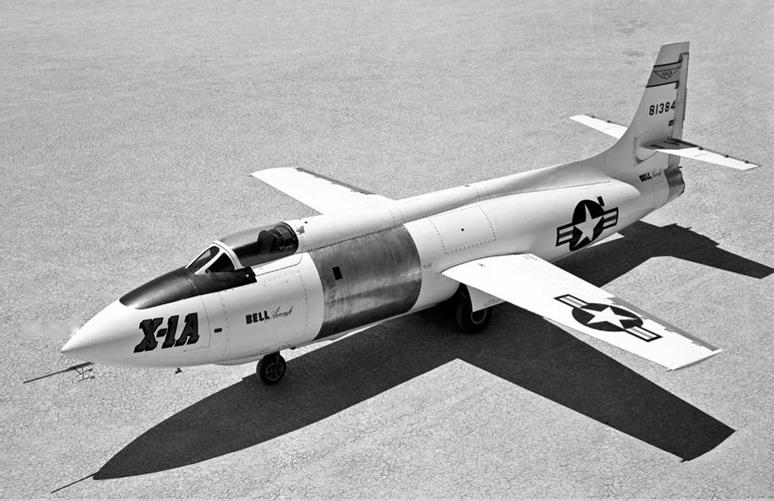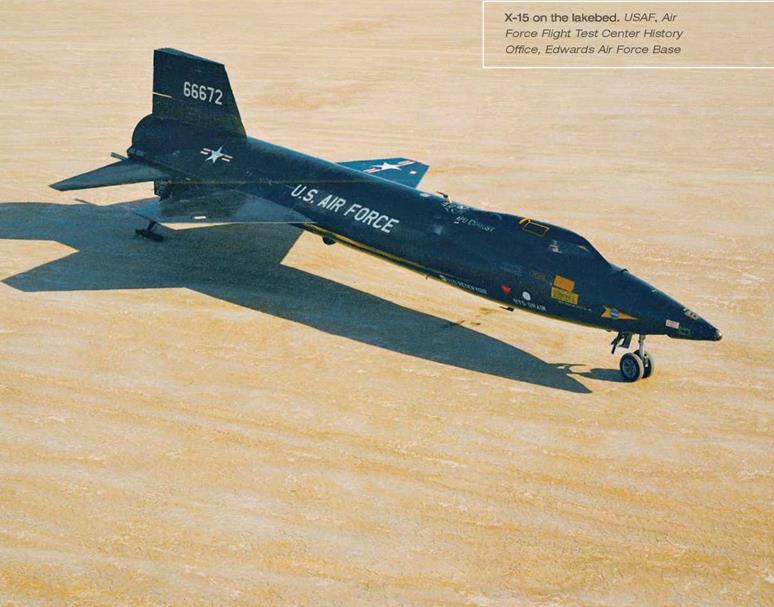THE BELL X-1A
Exactly one month after Chuck Yeager had made history by breaking the sound barrier in the X-1, the Army Air Force began a new study with Bell
for an airplane to fly at Mach 2. Labeled the X-1A, the new airplane had the same wing and horizontal stabilizer and the same rocket engine as the X-1, but it had a completely new fuselage with a more slender shape (higher fineness ratio and increased propellant storage).
On December 12, 1953, Yeager flew the X-1A to a Mach number of 2.44 at 70,000 feet. This set an unofficial world speed record. During the flight, while at this Mach number and altitude, the airplane suddenly encountered inertial roll-coupling and went out of control. Yeager was knocked semi-conscious in the cockpit as the airplane wildly descended. Fortunately, at 25,000 feet, Yeager was able to regain control. Although not intended to be part of the research flight plan, this was the
|
|
|
|
|
|

X-1A on the lakebed. NASA Dryden Flight Research Center
first time that such roll-coupling at supersonic speeds had been encountered, although it had been predicted earlier by some aerodynamicists. The Air Force subsequently limited the top speed of the X-1A to Mach 2. Yeager, however, was not the first pilot to fly at Mach 2 or higher. This honor went to Scott Crossfield, who flew the swept – wing Douglas D-558-2 Skyrocket to Mach 2 on November 20, 1953.
The last flight of the X-1A was a captive flight in the carrier B-29. On August 8, 1955, as the B-29 was ascending to launch altitude, the X-1A suffered an internal explosion. The pilot, Joe Walker, in an act of heroism, saved himself and the crew of the B-29, but the X-1A was jettisoned and fell to the desert floor. Joe Walker was the second man to fly the X-15.











